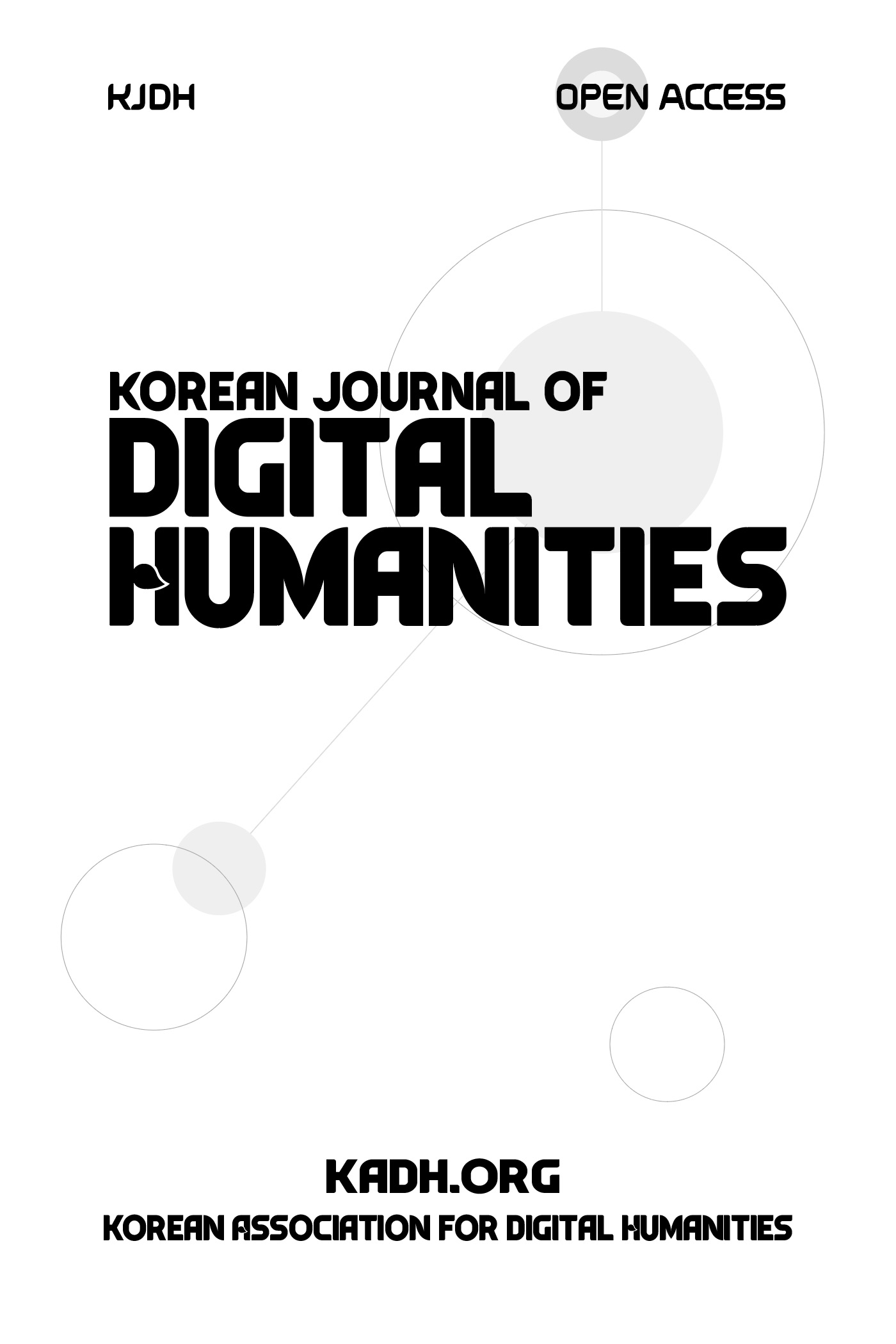디지털 큐레이션: 미래 세대를 위한 디지털 인문학 교육
Digital Curation: Digital Humanities Education for Future Generations

초록
나는 이 글에서 ‘디지털 원어민’ 세대의 인문학도들이 실천할 수 있는 ‘디지털로 인문학 공부하기’의 방법을 ‘디지털 큐레이션’이라는 이름으로 제안하였다. 디지털 큐레이션은 디지털 미디어를 통해 획득한 디지털 자원을 체계적으로 조직화하여 지식과 이야기를 담은 디지털 콘텐츠를 만들어 내는 행위이다. ‘디지털 큐레이션’의 기술적인 방법론은 ‘시맨틱 데이터’의 편찬이다. ‘시맨틱 데이터’란 독립된 데이터의 나열이 아니라, 데이터 사이의 연결 방식을 표현함으로써 데이터에 담긴 의미를 명시적으로 설명할 수 있도록 구성된 정보 기술 형식을 말한다. 디지털 큐레이션은 디지털 아카이브라는 결과물을 만들어 낸다. ‘시맨틱 데이터’ 기반의 인문 지식 디지털 아카이브는 우리의 인문학적 탐구의 대상이 되는 세계를 데이터로 재현한 저작물이다. 이렇듯 큐레이팅 된 인문학 자원의 저장소인 시맨틱 데이터 아카이브에 대해 우리는 다음과 같은 활용성을 기대할 수 있다. 첫째, 여러 학문 분야에 걸친 데이터 통합: 학제간 의사소통과 협업을 촉진하여 인간의 지식과 문화를 총체적으로 이해할 수 있게 한다. 둘째, 교육적 응용 지원: 교육자와 학생은 이 아카이브를 다양한 문화 요소의 상호 연결성을 탐구하는 자원으로 사용할 수 있다. 셋째, 인공지능-준비성: 시맨틱 데이터 형식으로 큐레이팅 된 인문 지식 콘텐츠는 인공지능이 효과적으로 처리하고 이해하며 활용할 수 있는 데이터이다. 인문학 연구자와 학생들은 시맨틱 데이터 큐레이션을 통해 인공지능과 협업하는 미래 인문학을 준비해 갈 수 있다.
- keywords
- 디지털 인문학, 디지털 큐레이션, 디지털 아카이브, 시맨틱 데이터, 시맨틱 데이터 아카이브, 생성형 스토리텔링
Abstract
In this article, I introduce a method called ‘digital curation’ designed for humanities students who are part of the digital native generation. Digital curation involves systematically organizing digital resources to create informative and narrative-rich digital content. This process utilizes ‘semantic data,’ which is information structured to clearly define its own meaning and its relationships with other data. Semantic data usually involves entities such as people, places, or things, and delineates their interactions and connections. The primary outcome of digital curation is the creation of ‘digital archives’ that rely on semantic data. These archives serve as repositories for humanistic resources and effectively replicate the subjects studied in the humanities through structured data. The potential benefits of these semantic data-based archives include: 1. Enhancing interdisciplinary integration, which facilitates communication and collaboration across various fields, enriching our understanding of human knowledge and culture. 2. Supporting educational uses, where educators and students can utilize the archives to explore the interconnectedness of different cultural elements. 3. Preparing for future integration with AI, as the data format is well-suited for AI processing and utilization, enabling a collaborative future between humanities and artificial intelligence.
- keywords
- digital humanities, digital curation, digital archives, semantic data, semantic data-based archives, semantic data-based generative storytelling
- 투고일Submission Date
- 2024-04-30
- 수정일Revised Date
- 2024-05-15
- 게재확정일Accepted Date
- 2024-05-24
- 다운로드 수
- 조회수
- 0KCI 피인용수
- 0WOS 피인용수
_3200-704_투명.png)

